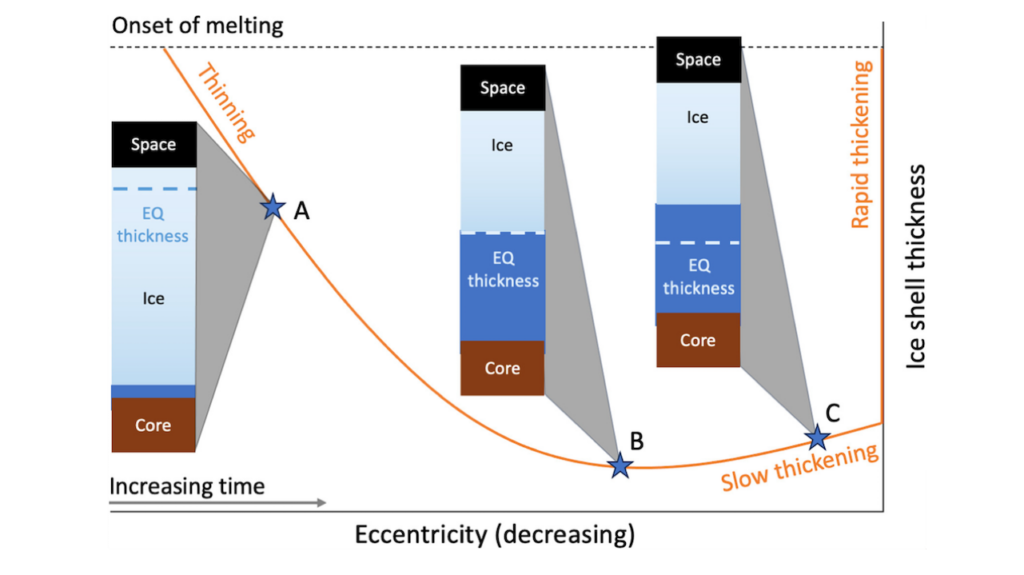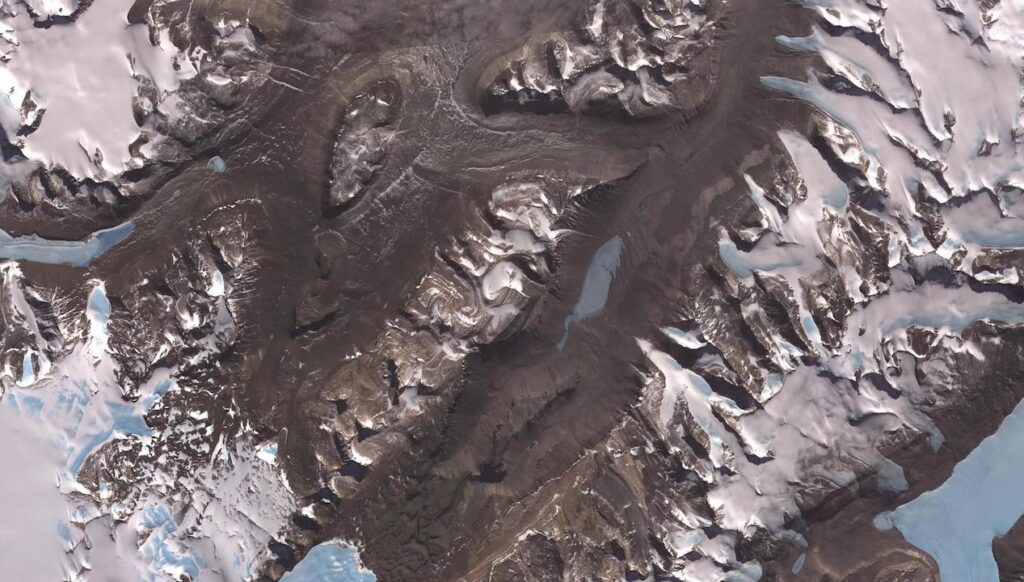Probing The Icy Shell Structure Of Ocean Worlds With Gravity-topography Admittance

The structure of the icy shells of ocean worlds is important for understanding the stability of their underlying oceans as it controls the rate at which heat can be transported outward and radiated to space.
Future spacecraft exploration of the ocean worlds (e.g., by NASA’s Europa Clipper mission) will allow for higher-resolution measurements of gravity and shape than currently available.
In this paper, we study the sensitivity of gravity-topography admittance to the structure of icy shells in preparation for future data analysis. An analytical viscous relaxation model is used to predict admittance spectra given different shell structures determined by the temperature-dependent viscosity of a tidally heated, conductive shell.
We apply these methods to the ocean worlds of Europa and Enceladus. We find that admittance is sensitive to the mechanisms of topography support at different wavelengths and estimate the required gravity performance to resolve transitions between these mechanisms. We find that the Airy isostatic model is unable to accurately describe admittance except at the longest wavelengths due to a rapid relaxation of the shell’s basal topography resulting from a large viscosity contrast.
Our models suggest that measurements of admittance at low spherical harmonic degrees are more sensitive to thick shells with high tidal dissipation, and may complement ice-penetrating radar measurements in constraining shell thickness. Finally, we find that admittance may be used to constrain the tidal dissipation within the icy shell, which would be complementary to a more demanding measurement of the tidal phase lag.
Ryunosuke Akiba, Anton I. Ermakov, Burkhard Militzer
Subjects: Earth and Planetary Astrophysics (astro-ph.EP)
Cite as: arXiv:2105.02790 [astro-ph.EP] (or arXiv:2105.02790v1 [astro-ph.EP] for this version)
Submission history
From: Ryunosuke Akiba
[v1] Thu, 6 May 2021 16:28:42 UTC (2,208 KB)
https://arxiv.org/abs/2105.02790
Astrobiology,








